Cody Miller Rebounds, Reflects and Looks Ahead
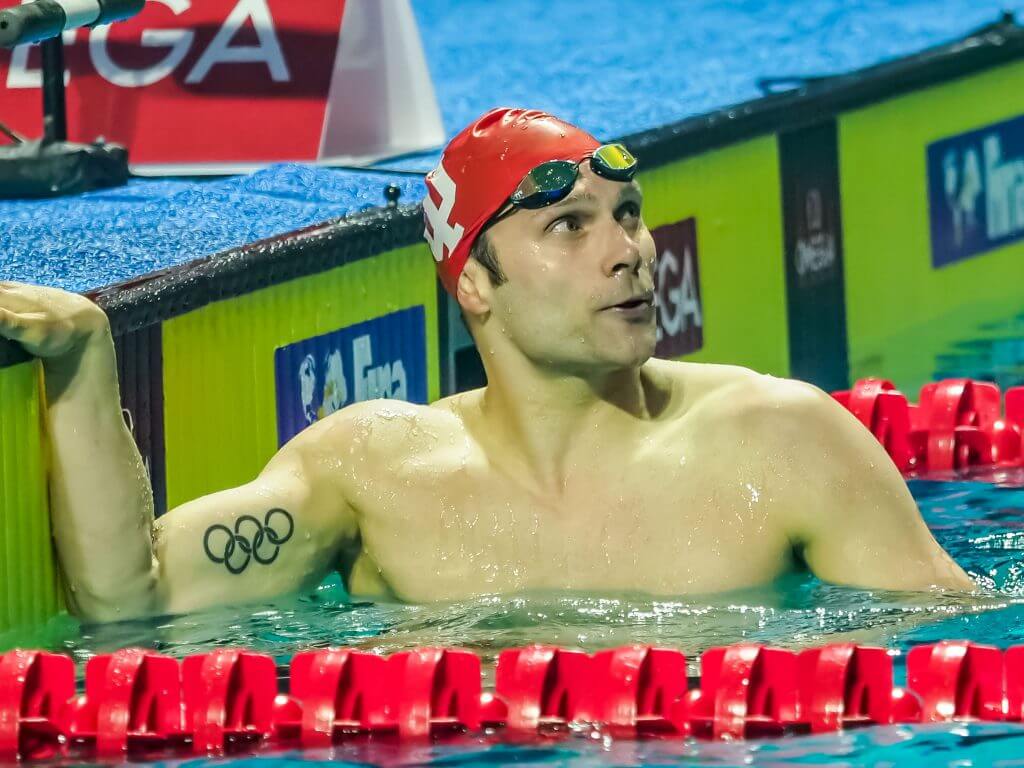
About a month before last year’s U.S. Nationals, Cody Miller couldn’t kick breaststroke. He had begun feeling pain in his left knee at the start of 2018, pain that was “gradual,” “chronic” and “always changing,” and he had no idea what was causing it. And in a subconscious effort to protect himself from the pain, he accidentally compromised the muscles that power his breaststroke.
So Miller showed up at Nationals and ended up fifth in his signature 100 breaststroke, four tenths off the pace of national champion Michael Andrew nine tenths slower than his lifetime best, the 58.87 he swam in August 2016 that made him Olympic bronze medalist.
Was Miller washed up, stagnant to the point that a collection of teens and early-20-somethings had caught up? Not quite—but the Cody Miller machine definitely contained some rusted cogs.
“Over time, my VMO, which is the big muscle inside your knee on the inside of your leg, the big breaststroker muscle, began to shrink because I was using my left leg a lot less subconsciously,” Miller said. “Once the muscle in that leg was really atrophied, the tendons around the joint in my knee could no longer sustain all the breaststroke kick, all the torque, all the power.”
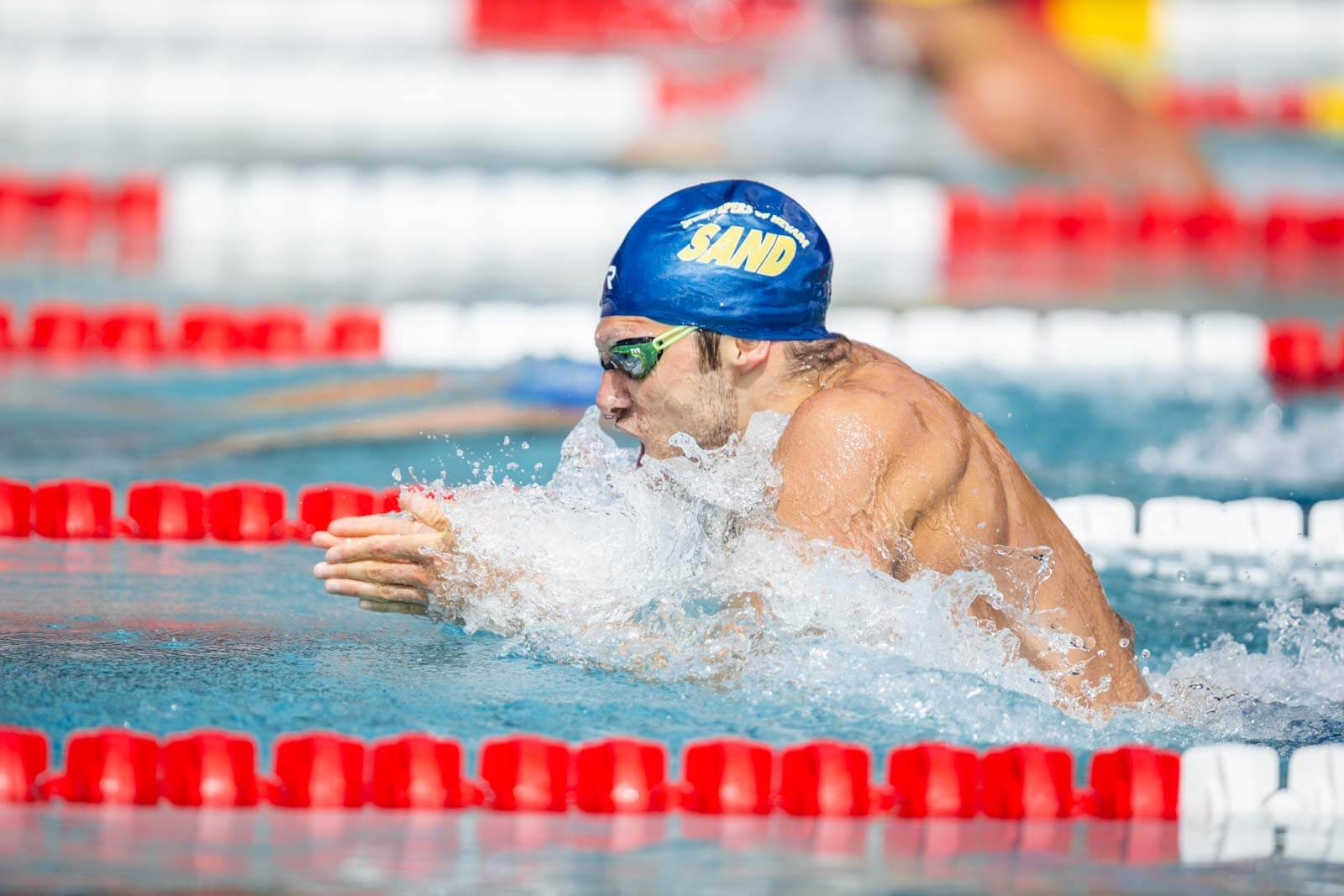
Photo Courtesy: Becca Wyant
Medical tests found tears in Miller’s MCL and meniscus, and the blood around his knee was stagnated and lacking oxygen. But all that ligament damage and muscular decay resulted from pain compensation. The source of the initial pain? Plica syndrome, where a layer of tissue gets folded between two joints and causes pain when the joints move.
Miller called it “basically just pointless pain.” But the Plica proved costly. For the first time since 2013, he was shut out of the top U.S. international team for the summer after finishing fifth at Nationals. He lost USA Swimming funding and missed out on sponsorship money tied to his performance.
His frustrations, however, extended far back from Nationals. For more than six months, he had been unable to live his normal swim training lifestyle, and he had not been competitive with his usual rivals or with the standards he expected of himself. After a year (2017) where Miller had not trained as much as usual in the post-Olympic year, he was ready to focus on returning to his peak, but his body kept pushing back.
“For the longest time, being injured and not swimming well, there were always those thoughts and doubts: ‘Maybe I won’t be able to do it. Maybe I won’t be able to make a recovery. Maybe I’m past my prime.’ Every athlete has those thoughts, and if they tell you that they don’t, I think that they’re lying,” Miller said. “Everyone has them. It’s just a matter of how you handle them. For me, it was tough.”
Desperate for a resolution, Miller went in for tests in August, and he finally learned the extent of the damage to his knee. In one procedure, doctors punctured tissue near his knee to drain blood and fluid. Only then could Miller work to build back the strength in his left leg.
“It basically took six months to kind of build back up the atrophied leg to where I could actually train breaststroke again,” he said. “It wasn’t until about January or February of this year where I was in a position to actually legitimately train breaststroke.”
Miller’s Olympic Triumph
Before the Rio Olympics, Miller had been best-known as the second U.S. representative in the 100 breast behind Kevin Cordes, who was considered a strong medal contender. But then Miller edged out Cordes and broke his American record and took bronze.
At the conclusion of that race, television cameras showed Adam Peaty celebrating his gold medal and world record, but viewers around the world could hear a loud scream in the background. That was Miller, one lane over, in awe of not just the medal he had won but the culmination of the process that led him to that point.
“You always hear stories about how people can defy odds and do the impossible, and you don’t have to be the most talented, all those rah-rah stories, and I kind of see myself kind of as that,” Miller said. “When I look at what I accomplished years ago, I think about how I got there and what it represents. What it represents is just a total commitment to preparation.”
Interestingly, when asked to reflect on his Olympic experience, Miller replied with a chuckle, “Dude, no one’s actually asked me that question.” In three years since Rio, Miller had never taken the time to consider how one week in Brazil impacted his swimming career.
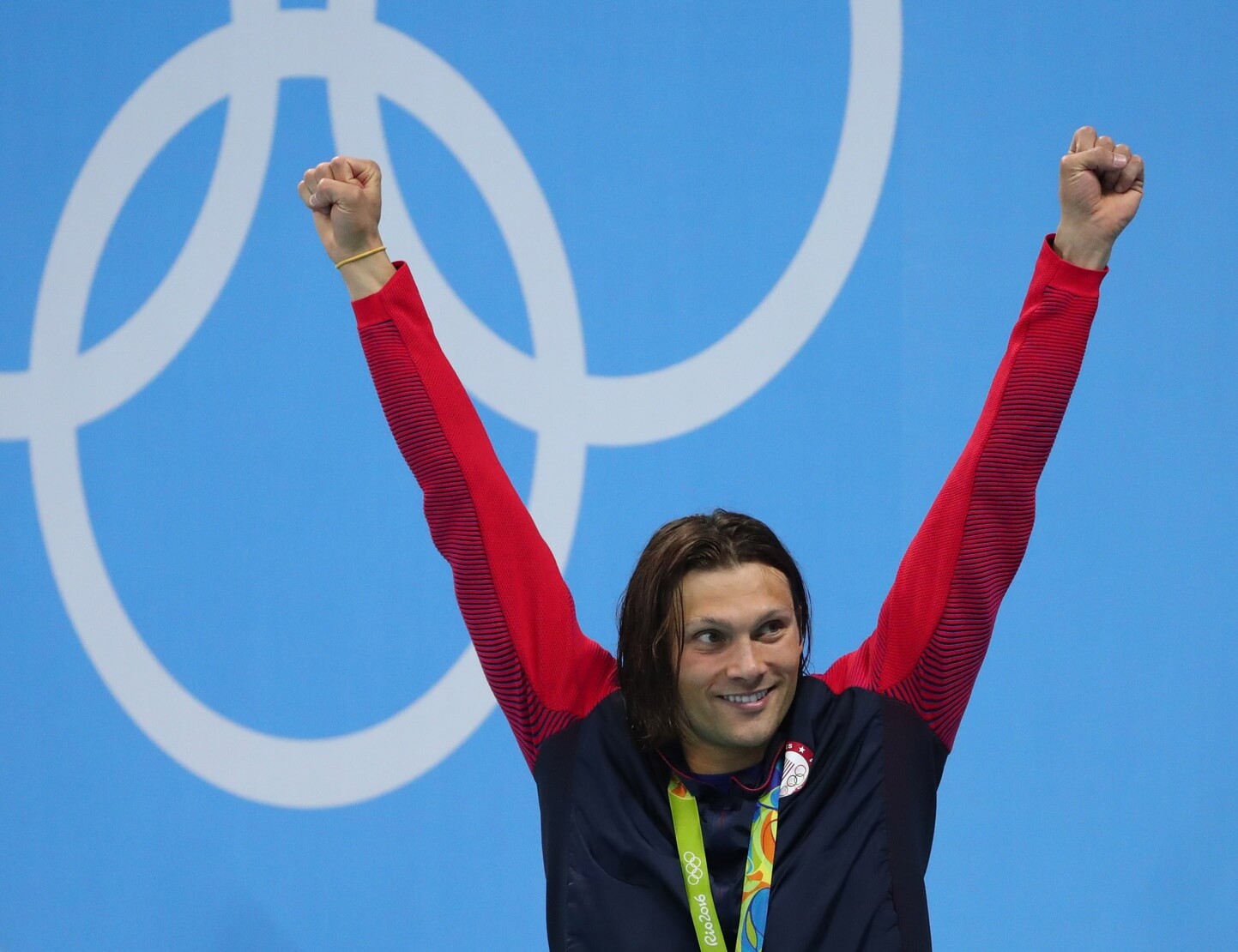
Cody Miller after winning bronze at the 2016 Olympics — Photo Courtesy: Rob Schumacher-USA TODAY Sports
Six days after his 100 breast bronze medal, Miller swam the breaststroke leg on the U.S. men’s 400 medley relay, ceding significant ground to Great Britain’s Peaty but doing enough that the Americans could win gold. If the individual 100 breast was the signature moment of Miller’s career, this one got him into the history books as a contributor to Michael Phelps’ 23rd and final Olympic gold medal.
Without those two moments, Miller might never have had the opportunity to regularly share with young swimmers the story of how he, never a youth record-setter or a “freak” like Phelps or fellow Rio relay member Ryan Murphy, could become an Olympic medalist by dedicating himself to his craft.
“I hope that it’s a positive relatability that people can kind of see,” Miller said. “That’s why I celebrated it like that when I won that medal in Rio, because it meant that much to me. Because I was very understanding of how much of a long shot that really was.”
Bouncing Back
Today, Miller still lives in Bloomington with his wife, Ali. Discussing Ali, a former swimmer with coaching experience in both middle school, high school and college (at Indiana, where she was the volunteer assistant during Miller’s senior season), Miller said, “she gets my lifestyle.”
Miller explained that Ali’s swimming background made for an easier transition to married life, even if the two hardly ever discuss his swimming.
“We don’t talk about my training. Unless I feel like there’s something I really need to talk to her about, I know I can, and that’s very comforting, but most of the time I don’t,” Miller said. “I can talk about other stuff. I often talk about how I think. I feel like when it comes to professional swimming, you have to have balance. You can’t just have swimming.”
Meanwhile, in October 2017, Miller launched a YouTube channel in which he would give fans an insight into his daily life and training. Initially designed as an avenue to practice video-editing skills, Miller ended up building up a following for the videos that has now reached more than 90,000 subscribers on YouTube.
“It’s basically me just sharing a story and trying to piece together a narrative in an interesting, entertaining way while providing some form of swimming in sight, be it a set we’re doing or the way that we tackle a race or something about strategy,” Miller said. “For me to make a video that people enjoy, I get great reward from that.”
Miller posts new vlogs to his channel every Wednesday morning, and he likes knowing that he is helping the sport grow in a small way by getting fans excited or providing young swimmers with tips that they can use in their own swimming. It hasn’t hurt that Miller’s video and social media presence has helped attract sponsorships that are based less heavily on his performance in the pool.
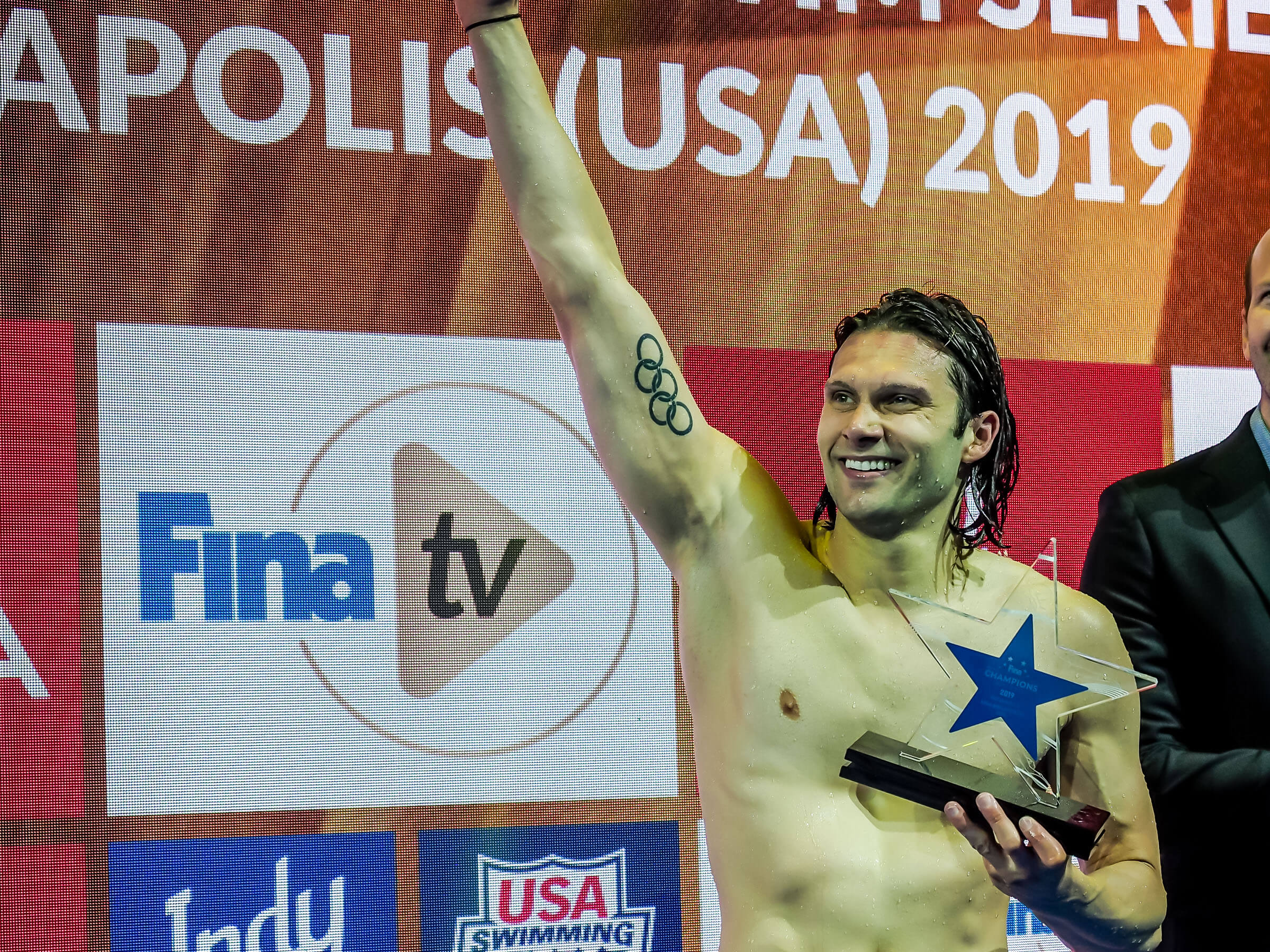
Cody Miller at the FINA Champions Series in Indianapolis in May 2019 — Photo Courtesy: Peter H. Bick
And as his life outside of competition has continued to flourish, Miller has finally returned to full health and to his top form. At last month’s TYR Pro Swim Series in Bloomington—at Indiana’s home pool—Miller won the 100 breast in 59.24, his fastest time since 2017 and faster than the winning time from 2018 Nationals. And in the 200 breast, Miller won the event in 2:08.98, his first lifetime best in the event in almost four years.
“I went so long without really racing at a high level that (Indiana coach) Ray (Looze) let me rest a little bit because I needed to go fast,” Miller said. “ It was really cool to swim fast at the Bloomington meet. Obviously, it meant a lot to go fast there and kind of prove that I can still swim and be competitive at our home pool. That was super cool.”
Sharing His “Super Personal” Story
One day in high school, Miller learned that father, Craig, had lied to their family about having a job while he was in fact addicted to alcohol and prescription drugs. After that, Craig withdrew from his family’s life, and Cody and younger sister Catie never saw him again after Cody’s high school graduation in 2010.
Finally, on Christmas Day 2015, Cody’s mother, Debbie, received a phone call that a homeless Craig had been found dead in San Diego. That was just six months before Cody would qualify for the Olympics.
Months after Rio, Miller decided to share his deeply personal, emotional story with Yahoo! Sports’ Pat Forde.
“I felt like it was important that people know that despite me losing my dad six months before the Olympics, I was still able to come through and still able to achieve my dreams,” Miller said. “Everybody has struggles. That’s one thing that I went through that really sucked, that I had to deal, with that my family had to deal with.
“I think you could go down the list of national team athletes, and everybody probably has something like that. Maybe not quite as bad, maybe a whole a lot worse, but everyone has trials and tribulations in their personal life that 100 percent affect their swimming and everything that they’re doing. I kind of feel like it’s important for people to hear those stories.”
With some distance building from those painful memories of his father’s addiction and death, Miller remembers some key life-lessons he learned from watching his father’s mistakes: the importance of social awareness, the importance of distinguishing good decisions from bad ones and the consequences of not accepting criticism and help from others.
Even while discussing a serious topic like addiction, Miller used swimming and a fellow Indiana Olympic breaststroker, Lilly King, to make his point. King, Miller explained, is willing to accept feedback from swimmers slower than her in practice, and she listens when a coach tells her that maybe a burger from McDonalds isn’t the best food choice.
Yes, the repercussions of King breaking her diet would be far less significant than in Craig Miller’s situation, but Cody’s point stands: The only progress in sport or in life comes with a willingness to listen.
“There were numerous times over the course of my relationship with him, even when I was in college, that I tried to help him. The bottom line is his addiction was so bad that he wasn’t willing to accept help because he wasn’t there to help himself,” Miller said. “You have to be understanding that people want to help you because they want you to succeed, and you have to be coachable and be willing to accept that.”
What Makes Cody Miller Tick
Miller remembers a moment not too long ago during his injury battle and the resulting struggles in the pool when a conversation with his wife made him reconsider some of his life decisions.
“Ali asked me, ‘Why are you still swimming?’” Miller recalled. “At the time, I legitimately couldn’t give her an answer. I did not know. That was a really dark moment for me. I was like, ‘What the heck am I doing with my life?’”
Soon enough, Miller realized why that simple question, where Ali wasn’t trying to freak out her husband, made him panic: Because of his ongoing struggles and frustrations. So Miller thought deep down about what’s left for him in the sport after five full years of professional swimming.
“Number one, first and foremost, I want to see how much farther I can take it. I want to see if I can get any faster. Can I go another best time at 27 years old?” Miller said. “Can I make another Olympic team? I don’t know. Can I set another record? I don’t know, but we’re going to see. The important thing is I’m enjoying the journey I’m on to get to those moments.”
Secondly, Miller stated, he wants help create a world where professional swimmers can thrive. He sees ongoing events like the new FINA Champions Series and the forthcoming International Swimming League as key markers in the sport’s growth, and he mentioned a FINA athlete panel meeting at the recent Champions Series meet in Indianapolis, where top FINA officials listened to swimmer thoughts and criticisms, as “just one small step in the right direction.”
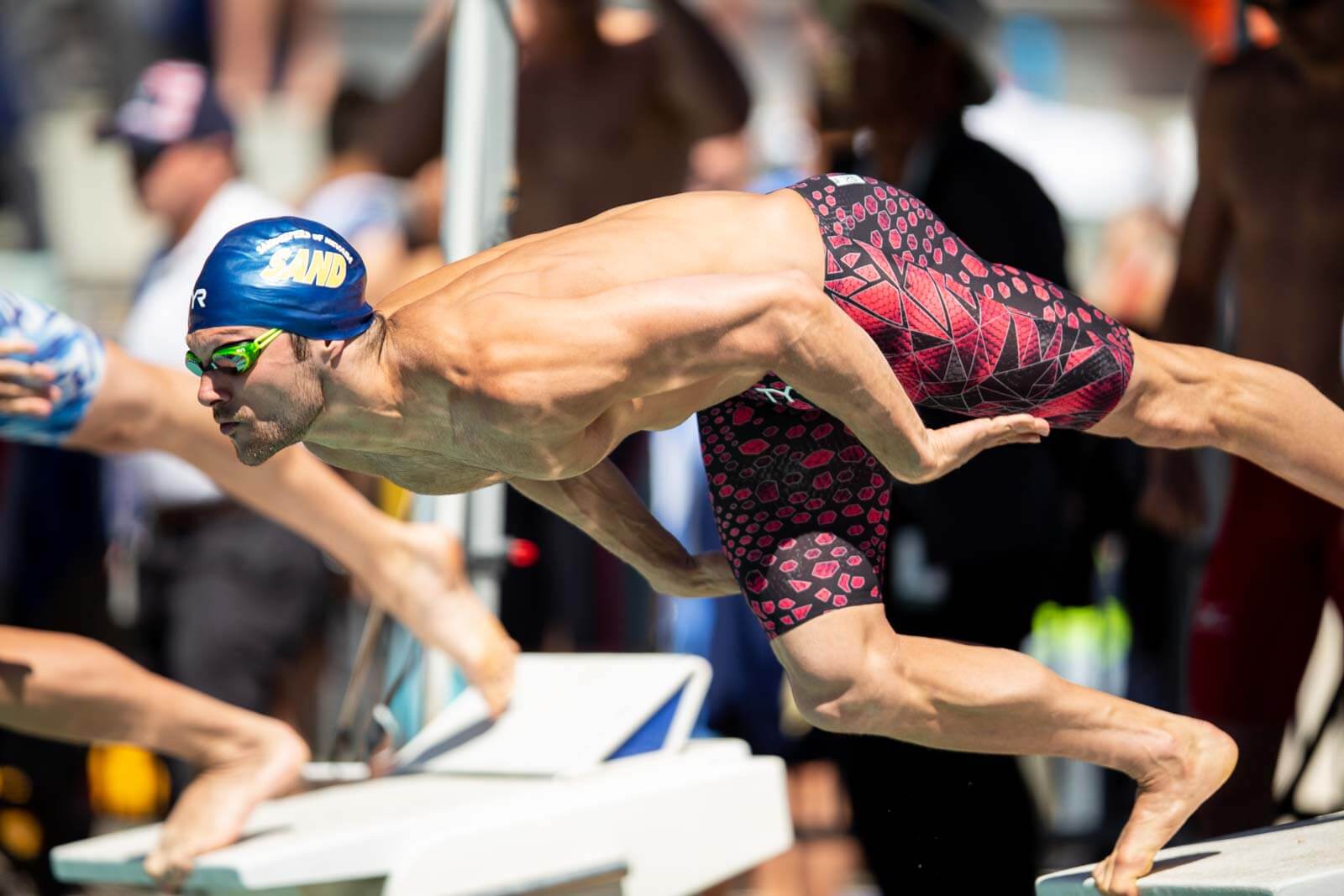
Photo Courtesy: Becca Wyant
Miller added, “I want to look back in 20 or 30 years at the time when I was swimming and say, ‘Man, that really sucked because we were not doing nearly as well as swimmers are doing now.’”
And then, on a much smaller level, Miller hopes to help swimmers remember that swimming is supposed to be fun. He admits that training can be a grind, but he has strived to remind swimmers the importance positive team energy and goofing off in order to maintain some level of enjoyment through the process.
Miller has numerous vehicles of conveying that message of positivity: Through his YouTube channel, at swim clinics around the country, at Indiana Swim Camp and through his own relationship with the Sandpipers of Nevada, his home club in Las Vegas that he still represents at meets and occasionally visits.
“I look back at my career, and obviously I always had dreams of being an Olympic swimmer, but for the longest time, the reason that I swam was because I had friends and I had fun doing it,” Miller said. “And I think that should only be the driving force. No matter what age you are, I really believe that.
“You might want to win gold medals, and you might want to be a successful swimmer, but if you don’t enjoy the process, guess what, you’re not doing it for the right reasons.”




Dylan Green